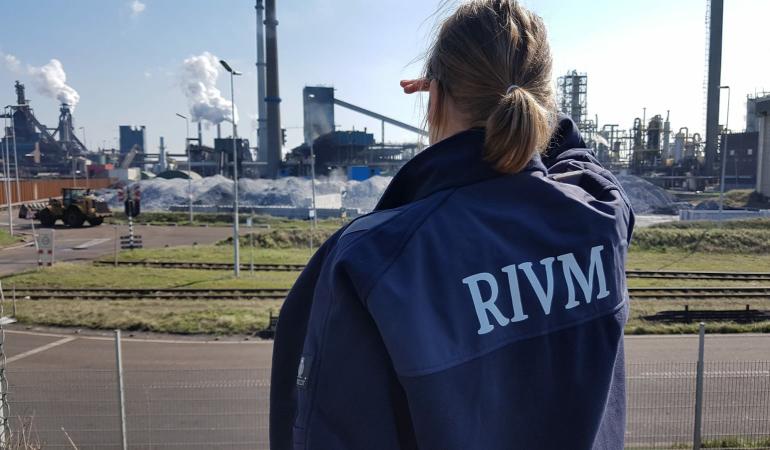
A new study conducted by RIVM shows that the PAHs and metals present in the living environment of residents of the IJmond region predominantly originate from the Tata Steel site.
Residents in the IJmond region wanted to know the origin of the substances deposited in their living environment. This RIVM study combined the results of previous measurements with findings from scientific literature, data from the Netherlands Pollutant Release and Transfer Register, and research into the composition of the dust.
Origin of dust deposited on the ground
The study shows that the PAHs deposited in the region mainly originate from the Tata Steel site due to:
- coke production;
- (coarse) dust particles becoming airborne;
- storage and transhipment of coal;
- dust that had previously settled on the Tata Steel site becoming airborne again.
The metals primarily originate from the Tata Steel site due to:
- dust particles being released during the production of pellets, sinter ore and coke;
- (coarse) dust particles, originating from the storage and transhipment of ores and other materials, becoming airborne;
- dust that had previously settled on the Tata Steel site becoming airborne again.
Origin of particulate matter in the air: existing data does not provide full picture
In this study, RIVM used two methods to determine the origin of the particulate matter (PM10)in the air. The study of the composition of the particulate matter shows that two profiles originate from local sources, with emissions differing per source, meaning that the composition of the PM10 provides information about the potential source. From this we have deduced that the PAHs and metals mainly originate from the Tata Steel site.
The second research method consisted of a comparison to determine whether the concentrations of substances identified in the air correspond to calculations based on the known emissions. This was the case for the particulate matter concentration. However, far lower levels of PAHs and metals were calculated based on the known emissions than were actually measured. Due to this significant discrepancy, RIVM was unable to properly determine the origin of substances in the air. RIVM did not examine the causes of this discrepancy.
More accurate measurement data required
RIVM advises authorities, that if they require more precise identification of the origin of the substances present in the air in the IJmond region, to take steps to collect more detailed data on the emissions of PAHs and metals. In addition, RIVM advises taking measurements aimed at identifying sources to monitor the deposition of PAJ and metals in the environment of the Tata Steel site. Collecting more precise measurement data will enable taking the right measures at the source, and is a key factor to be able to monitor whether measures taken with a view to reducing the presence of substances in the living environment are effective.
Third and final study
This is the third and final study into substances and health in the IJmond region. The study was conducted on behalf of the province of North Holland and the Municipalities of Beverwijk, Heemskerk and Velsen. In 2021, RIVM already concluded that the levels of PAHs and lead in the dust deposited in the living environment were undesirable from a health perspective, particularly when it comes to children’s health. RIVM previously concluded that more acute symptoms are reported to general practitioners in the IJmond region and that the air quality is frequently moderate to unsatisfactory. The findings of the present study have not had any impact on these conclusions. The three studies jointly provide answers to residents’ questions about the impact of substances present on the quality of their living environment.